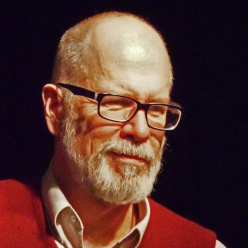UPDATE:
I didn’t realize it, but I borrowed a title! The title of this post is also the title of a great book by Robert Poynton , See his comment below. Thanks, Robert!
We talk a lot in improv about offers. What exactly do we mean?
Well: Everything is an offer. In any human interaction, there are multiple offers being made and either yes-anded or denied in any moment. Offers can be verbal, vocal-but-non-verbal, physical; they can be huge or tiny, conscious or unconscious.
Looking at the offers in the moment, and choosing the offer(s) to yes-and; this is the secret of the improvisors art.
This also explains how it is possible to disagree with the content of a scene partner’s statement, while still yes-anding the partner’s offer.
Try this experiment:
Stand in a neutral position. Your feet are about shoulder width apart, knees just slightly bent, hands hanging at your sides, spine erect but relaxed. Neutral. Now, shift your weight., Put a hand on one hip. Tilt your head slightly.
What have you done? You’ve made a HUGE offer, with just a slight change in posture. What does the offer mean to you? Is your posture now showing you to be bored? tired? interested? challenging?
(While we are experimenting: How did you do the above experiment? I did it sitting in a chair, typing. yet I could “see” the neutral position, and I could “see” the altered posture, which in my case I identified as meaning that I was challenging my scene partner, kind of an “oh yeah?” statement with my body. the ability to “see” our posture and facial expressions without a mirror is central to our ability to communicate….but that’s another blog post.)
New improvisors tend to over-offer. They don’t see their partner’s offers, and they don’t trust that they can simply yes-and a simple offer and have something delicious develop from it. So an improv scene between two amateurs is often a huge train wreck of offers, flying at each other and colliding in the performance space. There will be lots of overtalk (remember that term, too!) and little actual communication. Gags will abound. And the audience will probably be bored.
Advanced improvisors, on the other hand, will be keenly aware of their partner, and look to yes-and their partners, with the result that (sometimes, anyway) the scene they create seems absolutely magical.
Improv is more about RECEIVING than it is about BROADCASTING. And that is a hard concept to fully grasp, for many performers.
Improv, in the business/corporate world, is incredibly useful. If, in a business setting, you think like an improvisor, consciously look for the offers in the room, and choose the ones to yes-and, you’ll be on top of the situation in a dynamic and powerful way. We’ll talk about that more in a subsequent post: CHOOSING the offer to yes-and. This is a biggie. In scenes, and of course, in life. So stay tuned….
In the meantime, here’s a warmup for your group:
GETTING THE YES
Group stands in a circle. One player looks across the circle, facially indicating that they are asking permission to walk. The person they look at then says “Yes.” This allows the person who asked to walk towards the person who said “yes.” The second person now must receive permission from a third (getting the yes) so that she can get out of the space the first is about to occupy. And so on, players get the yes, walk towards the granter of the yes, one at a time.
Discussion: Was it hard not to start walking immediately after you GAVE the yes? Did it seem awkward to wait and GET the yes? Did it seem hard to get the attention of another to ask (silently, remember) for the yes? Why?
This is a warmup we use a lot before Mopco shows. It’s a very basic game, but it hugely improves our group focus and openness to offers.
A new session of Mopco improv classes will be starting soon. Look for the schedule at Mopco.org!

I found this very helpful. The work I do is off stage, using improv in organisations (see http://www.oyf.com or http://www.everythingsanoffer.com). I particularly like the idea that you are giving off HUGE offers with even tiny things. Thanks.